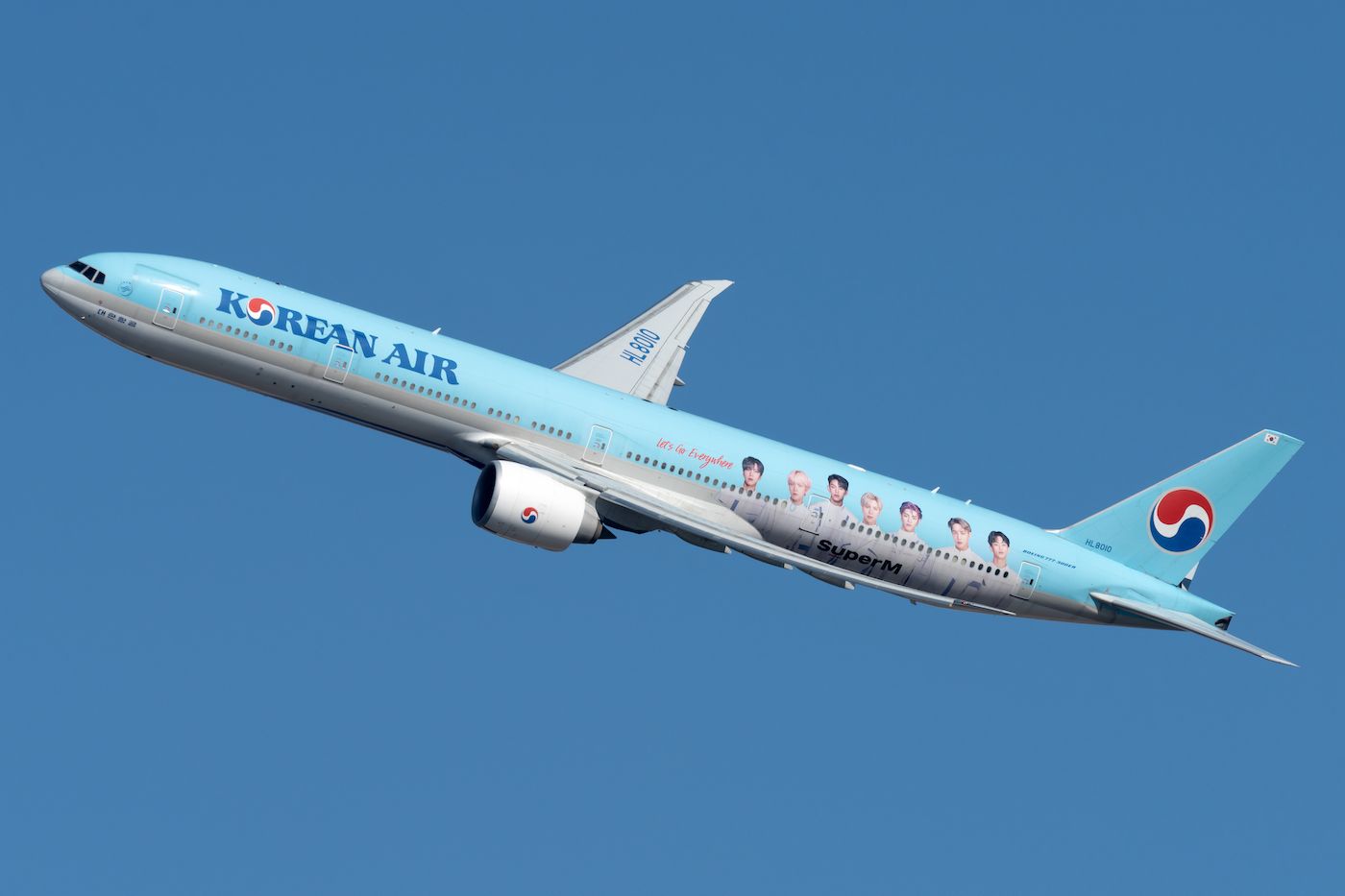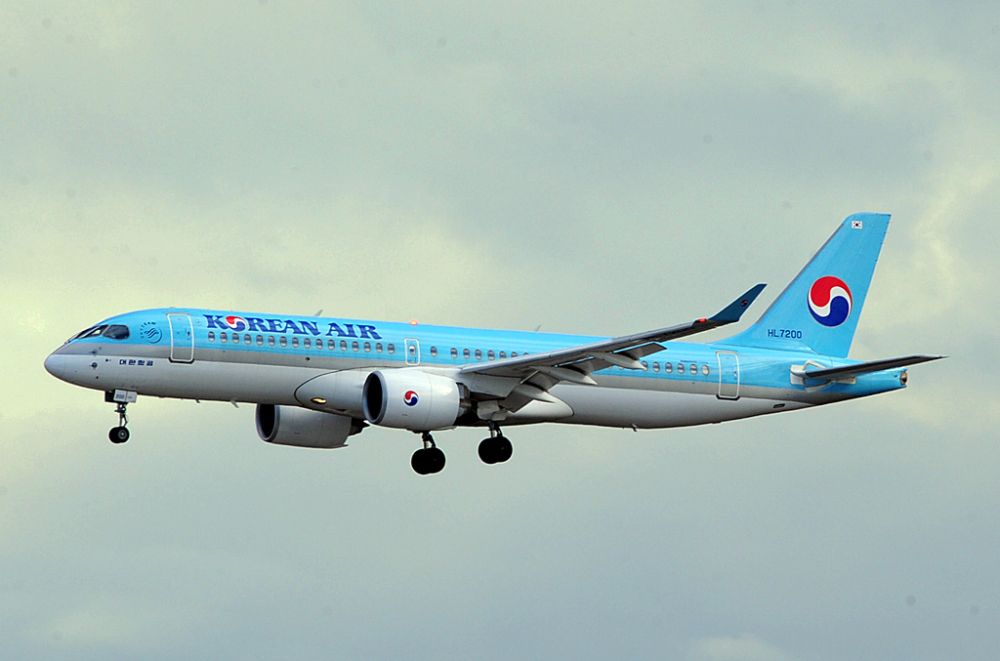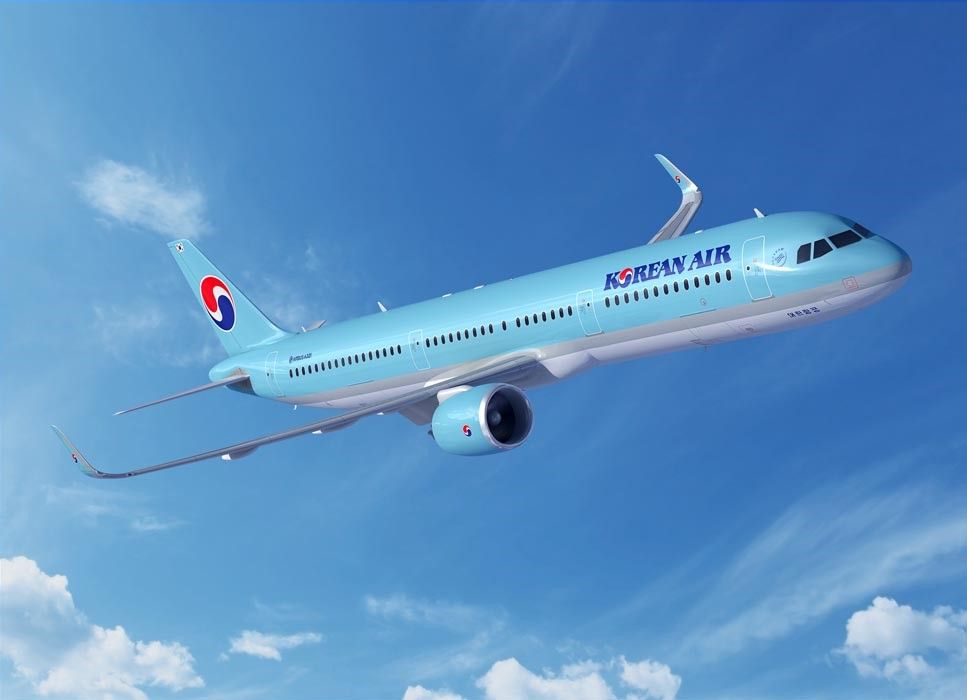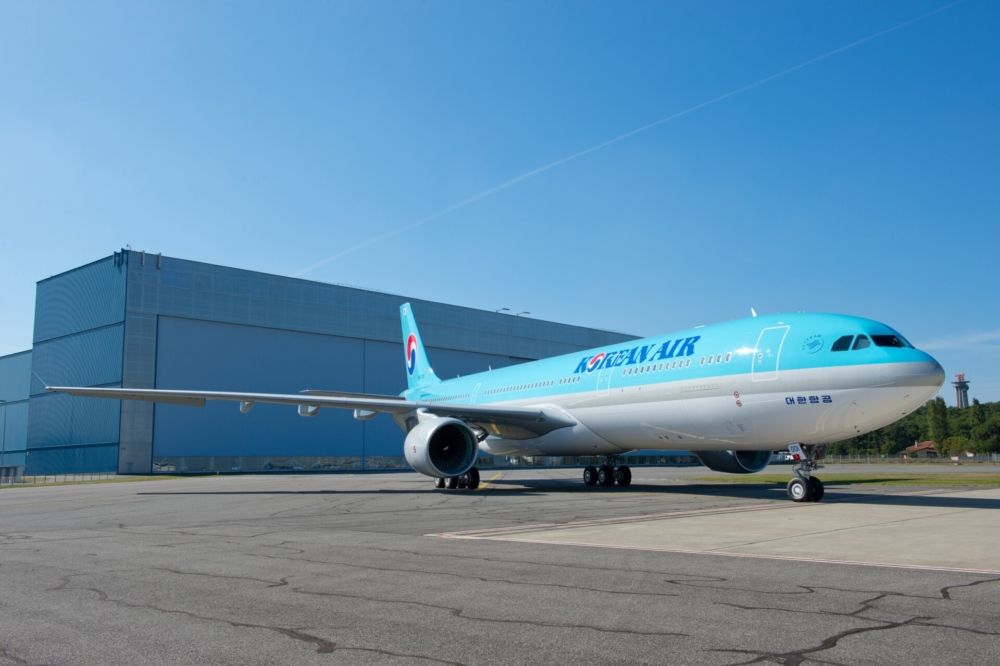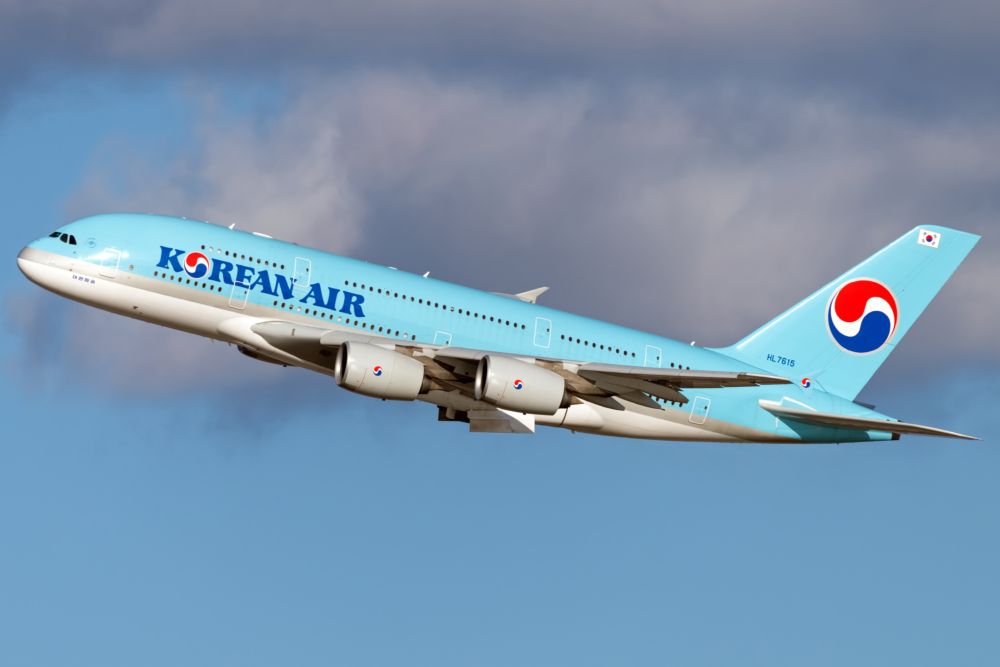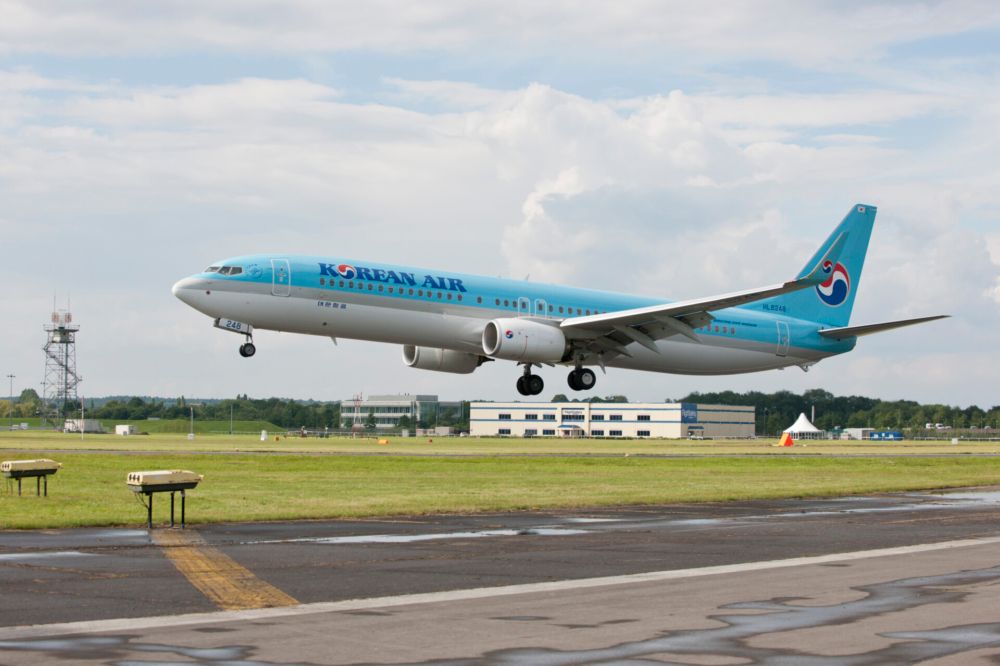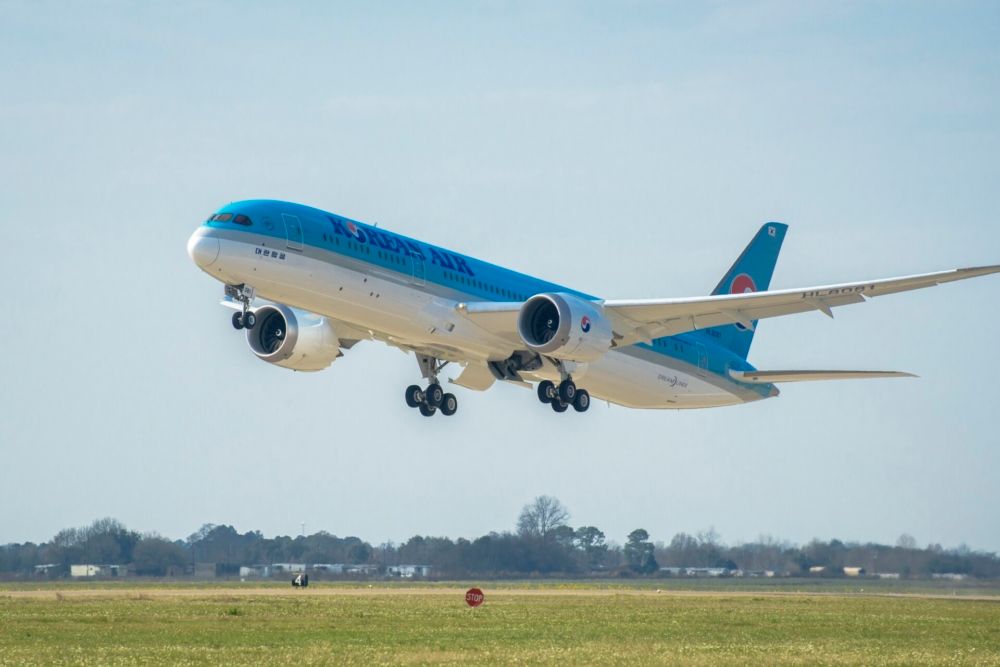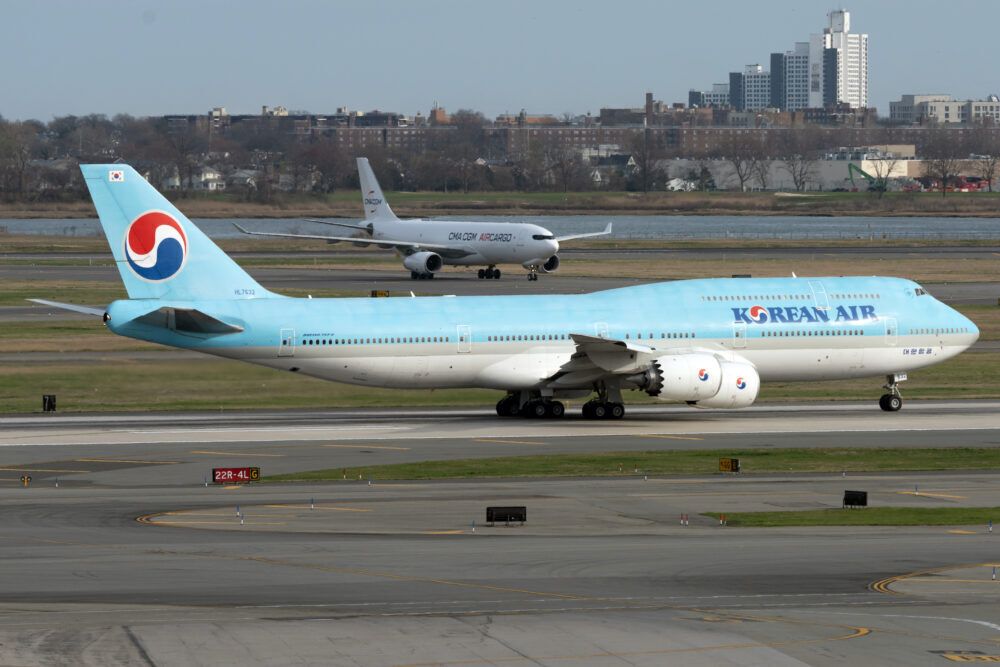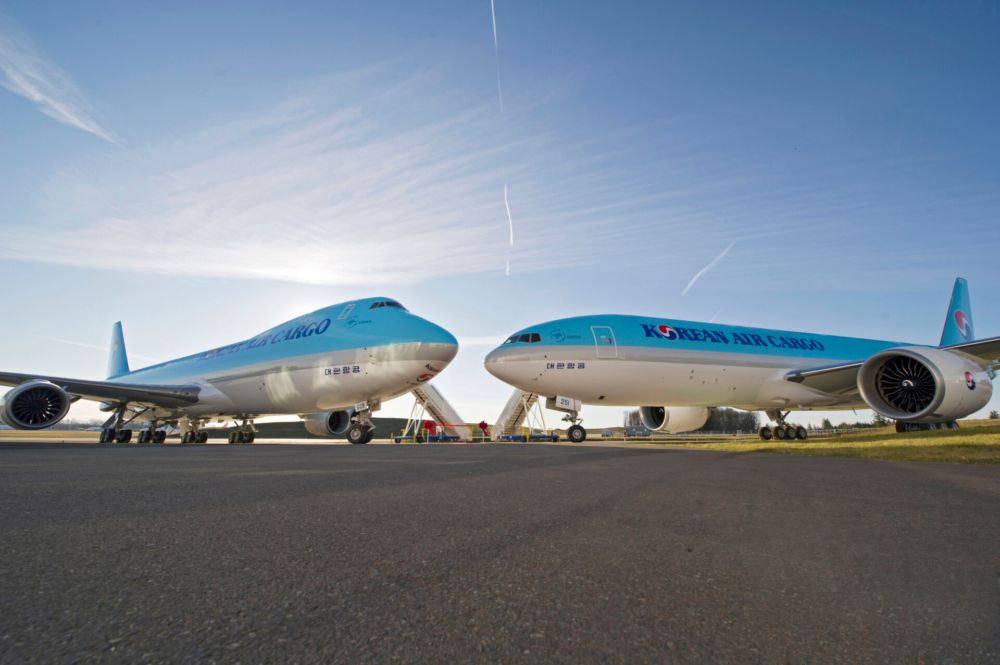* Article amended 09:08 UTC 23/12/2021 with updated figures from Korean Air *
Korean Air is the flag carrier of South Korea, as well as its largest airline by metrics such as international destinations and, crucially, fleet size. The Seoul-based airline has more than 150 aircraft at its disposal, painted in a distinctive sky blue livery. These jets offer incredible diversity, with a wide range of models present. Let's take a closer look at Korean Air's fleet.
An acclaimed Airbus A220 operator
Across all of its areas of operations, Korean Air presently operates a total of 156 aircraft. Among the newest are its 10 examples of the Airbus A220-300. These modern twinjets clock in at just 3.5 years old, with Korean Air having received the first examples in December 2017. The most recent delivery took place in March 2019.
Korean Air has fitted each of these narrowbodies with 140 economy class seats, laid out in the standard five-abreast (3-2) setup. While the A220 is a rare aircraft in Asia, this hasn't stopped Korean Air from excelling as a user of the type. Indeed, earlier this year, Airbus recognized it as the best A220 operator. This was the first time it gave out such an award.
The Airbus A220 is the only narrowbody Airbus design that Korean Air operates. As we shall explore later, it tends to prefer the Boeing 737 family in this domain.
Stay informed: Sign up for our daily and weekly aviation news digests.
That being said, it does have 30 examples of the A321neo on order. Nonetheless, the European manufacturer has a decent presence when it comes to widebody aircraft.
Airbus widebodies at Korean Air
When it comes to twin-aisle aircraft, Korean Air is a big fan of the Airbus A330 family. The carrier presently has 30 jets from this series in its fleet, of which eight are examples of the A330-200. Four of these are active, with the other four in storage, and they have an average age of 15.3 years old. Each of them seats 188 economy and 30 business class passengers.
The other 22 A330s in the Korean Air fleet are examples of the -300. According to the airline, all of these widebody aircraft are active at this moment in time.
According to SeatGuru, Korean Air fits its A330-300s with two seating configurations. Both have a 24-seat business class cabin, known as Prestige, at the front of the aircraft. However, their economy sections differ ever so slightly, with either 248 or 252 seats.
The other Airbus widebodies in the Korean Air fleet are, notably, its 10 examples of the A380. Owing to the present industry downturn, ch-aviation.com lists just one of these 'superjumbos' as presently being active. They are 9.7 years old on average, and set to be retired within five years. They each have 301 economy, 94 business, and 12 first class seats.
The Boeing 737 family
As alluded to earlier, the Boeing 737 family is popular at Korean Air when it comes to narrowbody aircraft. The carrier even has an exclusive Boeing Business Jet (BBJ) version of the 737-700, with just 16 seats.
In terms of regular passenger 737s, the most numerous design is the 737-900. Korean Air flies 12 examples of this (of which eight are active), alongside six extended ranger 737-900ERs. Additionally, it has three 737-800s at its disposal. It has previously flown a further 25 737-800s. They seat either 138 or 147 passengers in a two-class setup.
Moving forward, Korean Air has plans to modernize its narrowbody fleet with the addition of the Boeing 737 MAX 8. The South Korean flag carrier tells Simple Flying it has 30 examples of this next-generation jet on order. Owing to the type's grounding, which was only lifted in South Korea last month, these are already 2.4 years old on average. They will each have 132 economy class seats, alongside an eight-seat Prestige business class cabin.
Boeing widebodies
Boeing is also the dominant manufacturer when it comes to widebody aircraft at Korean Air. In terms of passenger widebodies from the US planemaker, it has 10 mid-size 787-9s in its fleet, with another 10 on order. It also has 20 orders for the 787-10.
Another popular Boeing twinjet design at Korean Air is the 777 family. For example, the airline has 12 777-200ERs at its disposal, although they are all inactive at present.
In terms of the larger 777-300, Korean Air has four inactive examples of this version in its fleet. Its 26 777-300ERs see much more use, as 25 are active. They are also much younger than their standard-range variants, at 7.7 years old on average compared to 23.
While Korean Air no longer operates the popular Boeing 747-400, it is a rare operator of the newer 747-8 version. However, just three of its 10 passenger 747-8s are active. Retirement is also on the horizon for these jets, and is expected to occur by 2031. They have 314 economy class seats, alongside 48 in Prestige business, and just six in first class.
Korean Air Cargo
Finally, the transportation of airfreight also plays a key role in Korean Air's day-to-day operations. As such, it has several dedicated cargo planes in its current fleet, all of which come from Boeing. This part of its portfolio of aircraft includes four 747-400ERFs.
It has previously flown another four, along with eight 747-400BCFs and 10 747-400F(SCD) jets. In terms of more modern 'jumbo jets,' Korean Air Cargo also has seven 747-8Fs in its fleet. These are 7.9 years old on average, and will likely outlast their passenger counterparts.
Finally, Korean Air also flies 12 examples of Boeing's cargo-carrying 777-200F. All of these are active at present, and they have an average age of 6.6 years old.
Overall, the sky blue-liveried South Korean flag carrier has a fascinating and diverse felt, with plenty of interesting developments set to occur in the coming years. It will complete its merger with Asiana Airlines towards the middle of the decade, which will only increase both the size and diversity of its already large and diverse portfolio of commercial aircraft.
What do you make of Korean Air's present fleet? How many of its aircraft have you flown on? Let us know your thoughts and experiences in the comments!

